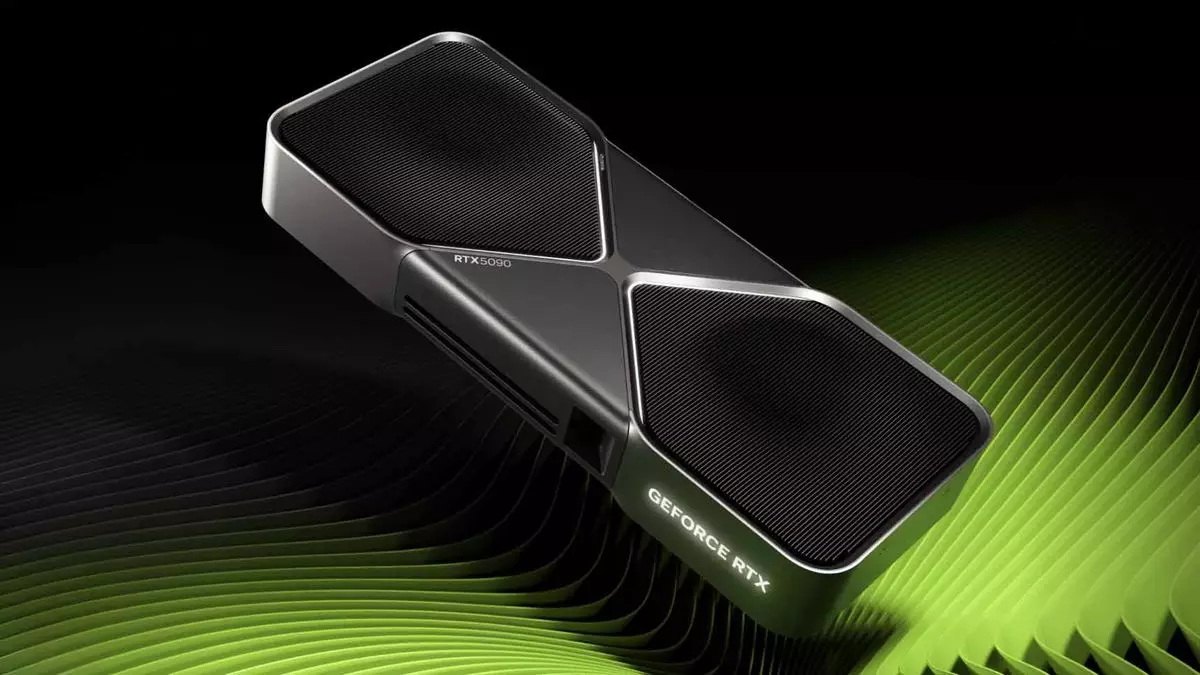The recent buzz surrounding Nvidia’s anticipated RTX 5090 has ignited conversations among tech enthusiasts and gamers alike about what this next-generation graphics card may truly offer. Reports of an engineering board showcasing a fully unlocked GB202 GPU could provide a glimpse into the immense potential of the RTX 5090, with a staggering 24,576 CUDA cores. This development is key to understanding Nvidia’s strategy and the expectations surrounding this high-performance GPU.
CUDA cores are crucial to the performance metrics of Nvidia graphics cards, and the RTX 5090’s anticipated CUDA core count presents a significant leap from its predecessors. The leaked specifications imply a 13% increase over the officially anticipated 21,760 cores in the RTX 5090, which hints at an engineering board poised to elevate performance to unprecedented levels. This raises concerns and questions for consumers who are already intrigued by the prospects of future gaming and AI applications that could leverage such power.
The implications of a higher CUDA core count extend past mere raw numbers; they signify the potential for enhanced real-time ray tracing, AI workloads, and general gaming performance. As gaming technology expands, the demand for hardware that can deliver such capabilities becomes ever more pressing. It is crucial for Nvidia to harness this power responsibly and effectively, lest they risk alienating a consumer base that seeks groundbreaking performance.
Another striking detail from the leaked data is the introduction of 32 Gbps GDDR7 memory. This enhancement compared to the 28 Gbps memory of the upcoming RTX 5090 presents a tangible upgrade that aligns with the escalating demands of modern computing tasks. This upgrade boosts the memory bandwidth from 1,792 GB/s to 2,048 GB/s, further facilitating the effective utilization of the additional CUDA cores.
The necessity for rapid data transfer rates cannot be overstated in today’s gaming environment, especially as resolutions increase and texture details become more intricate. The integration of high-speed memory is particularly important for maintaining performance, as a bottleneck in memory speed can severely hamper the benefits of increased processing power. Thus, Nvidia’s decision to enhance memory specifications could reflect a predictive approach to current technological trends.
Despite the excitement generated by these leaks, there is an underlying tension between consumer expectations and market realities. The apparent lack of competition from AMD, particularly regarding high-end GPUs with its RDNA 4 architecture, has arguably allowed Nvidia to approach the RTX 5090’s design with less urgency. Consumers are expressing disappointment with the quoted specifications of the RTX 5090, reflecting broader concerns about whether the product will live up to hype and initial expectations.
The landscape for GPUs has become increasingly complex, as consumers now evaluate not just raw performance but also stability, pricing, and availability. Rumors regarding limited supply of the RTX 5090 echo concerns about Nvidia’s potential to meet demand effectively, and how this might impact market dynamics. An environment where consumers feel they are not receiving adequate value for their investment could lead to lasting reputational damage.
One of the most tantalizing prospects emerging from the leaks is the potential for an RTX 5090 Ti or a variant card that could release the full power of the GB202 chip. Many viewers following the developments have speculated that Nvidia is keeping the most powerful variant back as a strategic move. History suggests that the company is not averse to showcasing limited versions of its top-tier products, as evidenced by the partial release of the RTX 4090.
Should Nvidia dare to unleash a fully operational GB202, the company would not only respond to consumer concerns but also create marketing opportunities that would eradicate any apathy. This could position the RTX lineup in a radically different light if they provide a product that stands out with undeniable power at competitive pricing.
While the leaks give us a compelling insight into the RTX 5090’s potential capabilities, there remains an air of skepticism among consumers about whether Nvidia will meet or surpass expectations. In the ever-evolving landscape of graphics cards, success may hinge not only on performance enhancements but also on strategic decisions that consider consumer sentiment and market dynamics. Nvidia stands at a crossroads, where bold moves could define its legacy in the next generation of computing.

